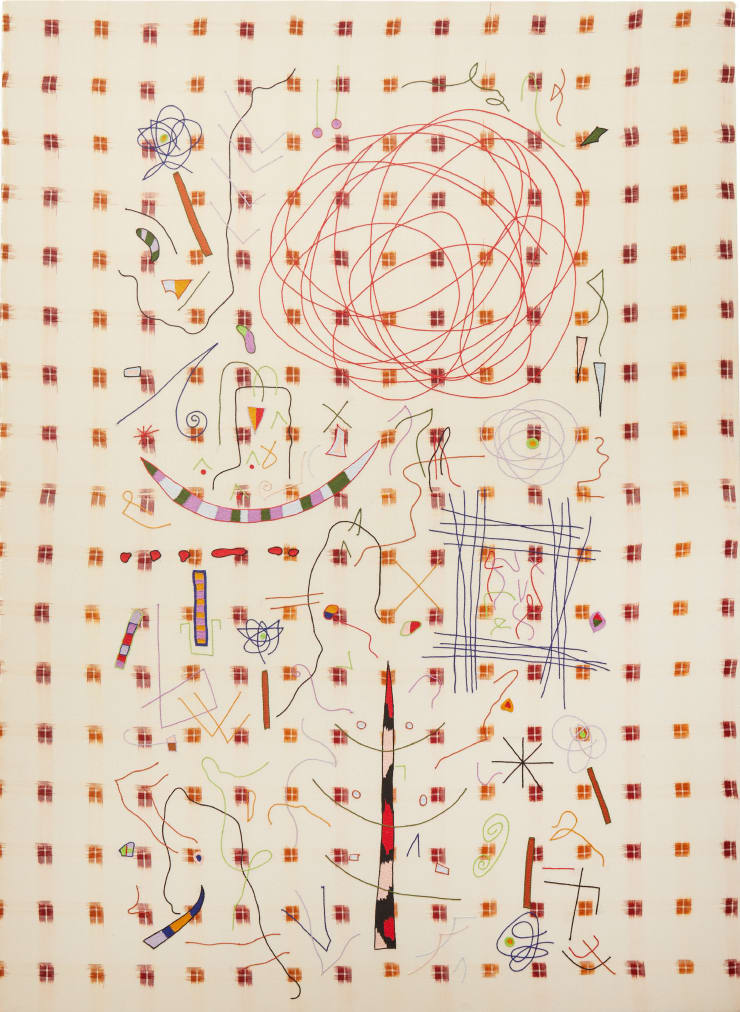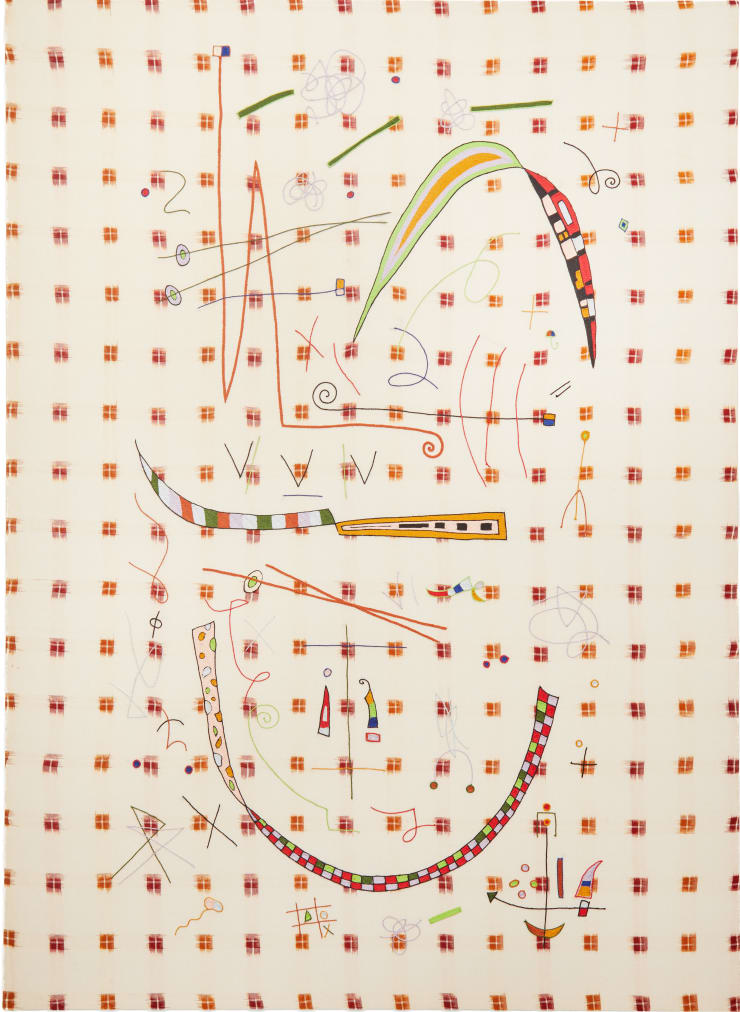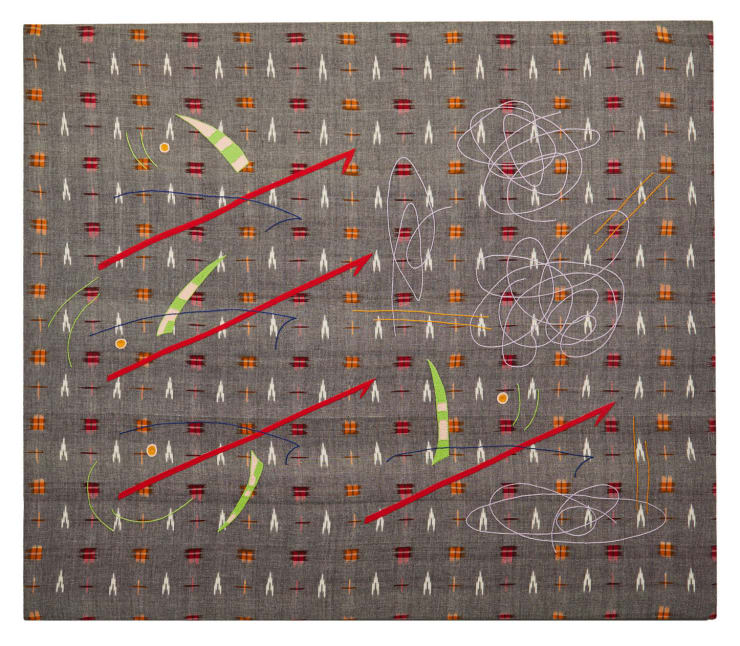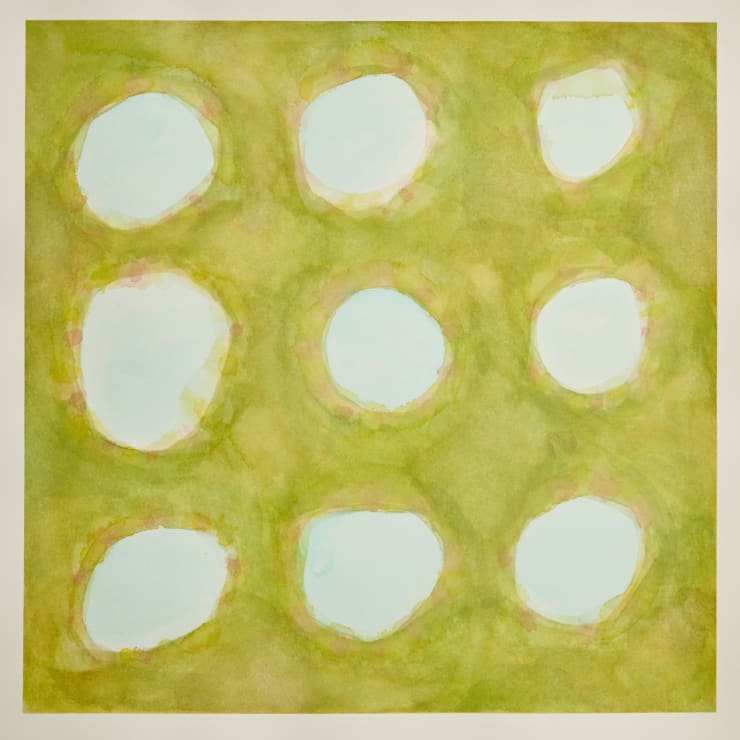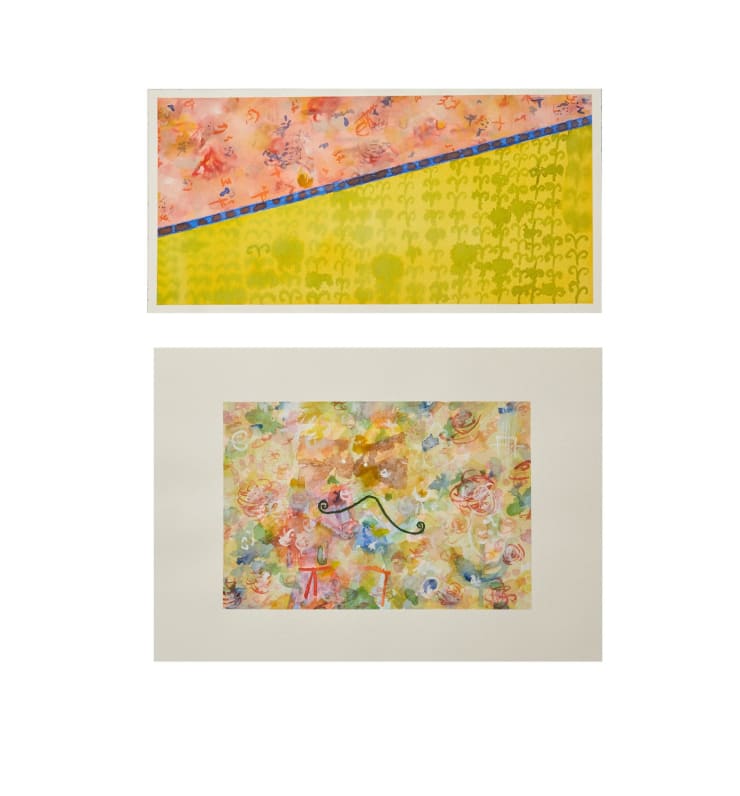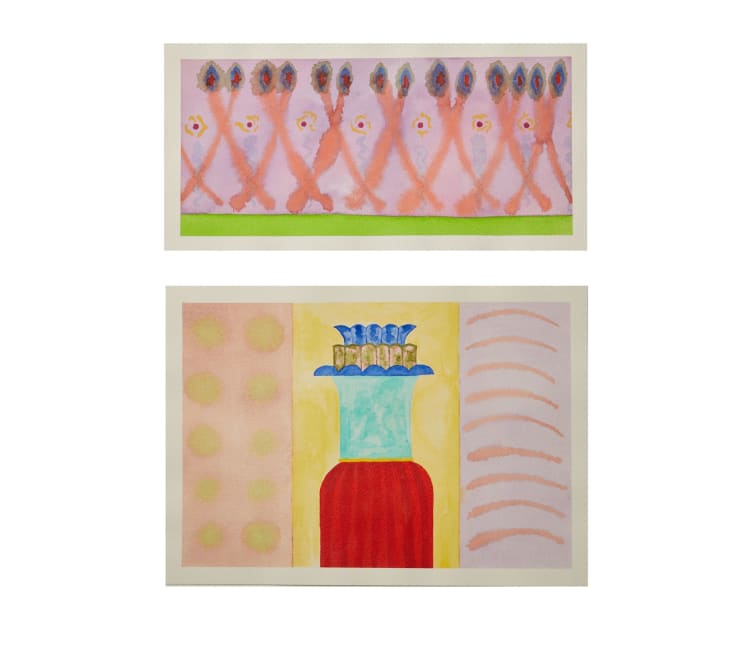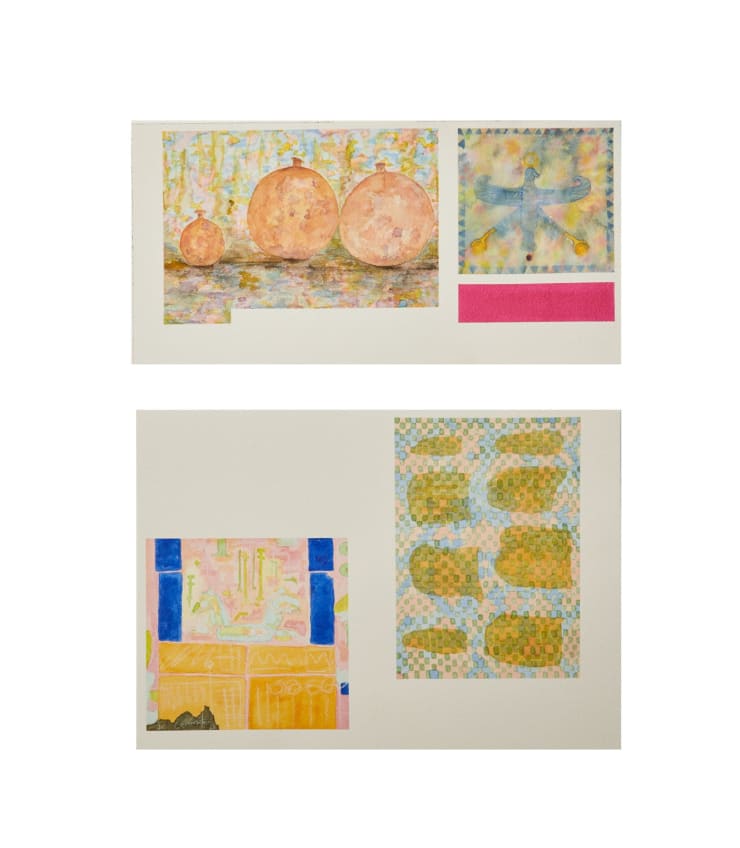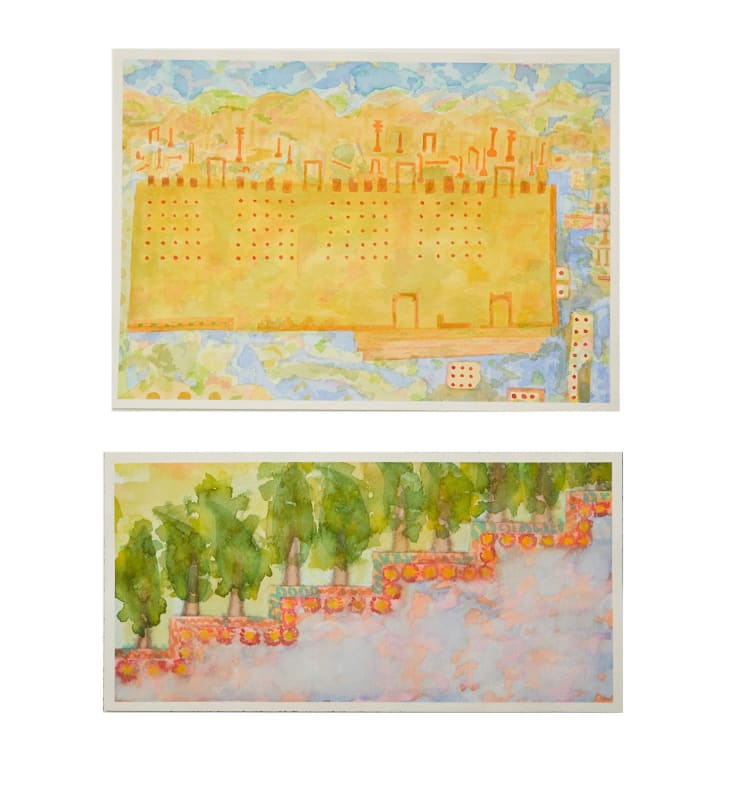-
The team at TARQ takes immense pleasure to present a body of work by Areez Katki created between 2022 and 2023, across the mediums of textile, paper and sculpture, that delve deeper into Katki’s research and unfolding narratives. Exploring the tactile and sensuous nature of textiles has been a recurring focus in Katki’s practice over the past decade. As he gathers and repurposes old, found, and sometimes remnants of newer textiles, one can observe how each piece of cloth carries associations with material memory. These connections can be familial and deeply personal or, at times, reveal more political and historical threads.
While holding all these politics together in his mind, Katki mines the personal and the historic when formulating his embroidered drawings, which puncture and suture alike these surfaces that we view so close to quotidian existences. The stories that we witness in his embroidery often break into abstraction: a style of proto-writing and non-linguistic communication that has become a hallmark of Katki’s visual language.
-

-
Two bolts of cloth—a gray ikat as well as a crème—were found in his grandmother’s cupboard and archived by him to some degree when Katki revisited their Mumbai home in 2018. Upon enquiring about their origins, Katki’s uncle recalled that two bolts of handwoven cloth from Kashan (Iran) were once brought by him and given to Thrity (his mother/Katki’s maternal grandmother), several decades ago. Without any guarantee whether these were the actual bolts of cloth from Iran that were given to a mother by her son, there’s speculation around their provenance—as there is with various familial affects over the decades. Katki often embraces cues and uncertainties in this practice of dealing with amorphous chronologies: eschewing the rigidly ethnographic and historiographic roles of archaeology for a more intuitive, imaginative and sensuous approach to image making on found cloth.
-
Through inquisitive research, Katki began studying the contents of Tablet IV from the Epic of Gilgamesh, an ancient Mesopotamian odyssey. The narrative of the poem serves as the conceptual tableau for Katki’s Oneiria series of embroidered panels, as well as their painted studies. Inspired by Gilgamesh’s journey across an apocalyptic dreamscape with Enkidu, Katki exercised his own psychoanalytic dream-keeping journal where his anxieties of loss, death, and fear unfurled. Transcribing, illustrating, and embroidering these visions on khadi panels, Katki reveals his own surreal, often cinematic, visions interlaced with anxieties from a queer antecedent.
-
While reflecting on the relational and affective qualities conjured by organic materials—the histories they hold, the traces they leave in the bodily archive—Katki decided to explore some of these materials and process them as pigments for a series of paintings. Katki has borrowed this verb- 'to anoint'- from a religious lexicon, but also removed it from the auspices of spiritual or religio-cultural specificity. The act of anointing, here, acts more in reference to his own personal relationship with queer ecologies: materials that he has historic and personal affinities for, materials that conjure sensorial meanderings, and thus, materials which also speak of his own corporeality. By extension of this relational study, four meaningful substances that he found himself able to trace, stain and mark surfaces of his body with, and subsequently these four sheets of cotton paper with, were chosen for this series.
-
-
Further, the three mauve handkerchiefs that Katki embroidered for this exhibition were part of a singular bolt of khadi cloth that was stored in his grandmother, Thrity's cupboard in his maternal family home in Mumbai, which he often visits and works from. Thrity's absence has left both material and sensorial traces throughout the home. Having no idea what Thrity’s designs and plans for this bolt of cloth were (along with several other bolts gathered and partially-used over the decades), Katki carefully constructs imagined narratives that commune with the material and storied histories of their lives. This trio of handkerchiefs imagines and illustrates an aesthetic journey, along with phenomena that lingered in the form of postcards, notes or markings: two of the mauve panels cite the work of Paul Klee (based on found postcards from the same cupboard, addressed to Thrity, from Katki’s uncle’s trips to Switzerland in the 1970’s). Klee has coincidentally also been an unwitting influence whose work Katki has studied over his years convening with European art historic references. Klee’s notion of ‘taking a line for a walk’, along with various other notes from his Pedagogical Sketchbook from the Bauhaus period, is a cue that Katki picks up, observes and subverts: through the act of drawing in the slower, fragmented and more laborious form of hand embroidery.
-
Five Fragments, which precede the larger Oneiria panels, can be viewed as the artist’s early experiments with using Sumerian cuneiform—the language that the Epic of Gilgamesh was originally inscribed in four millennia ago. These panels are composed with cuneiform symbols which the artist has studied extensively, to form a glossary of unique phrases, made up of simple words that these compositions evoke both linguistically and pictorially.
-
-
ABOUT THE ARTIST
Areez Katki's practice dwells around conceptual and material-based intersections which survey the phenomenology of postcolonial identities. Fragmentations of a migrant identity can be traced through objects and material culture, in the recesses of collective memories that host spiritual cosmologies and queering orientations. These relational embodiments and correspondences with materiality are underpinned in Sara Ahmed’s statement that, “Objects extend bodies, certainly, but they also seem to measure the competence of bodies and their capacity to ‘find their way’.” (‘The Orient and Other Others’ Queer Phenomenology 2006).
Navigating across disciplines and pedagogies, Katki’s practice looks toward generating deeper understandings of such affective material. His work also tends to pose questions around conditions such as hybridity, particularly through embodiments that have been subject to rupture. While investigative acts of gathering and conservation run throughout Katki’s nearly decade-long art practice, his writing contextualizes the repurposing of historic material through ongoing engagements with storied narratives and biomythography. Both practices examine the historic and the personal, using gestures which survey the nature of (our) relationships with sites and embodiments.
Katki's work has been exhibited across Oceania, Asia, North America and Europe. It is held in numerous public and private collections internationally. Katki has been invited to present a significant new body of work in ‘Personal Structures’ at the 60th Venice Biennale in 2024. He was recently appointed the Aotearoa NZ visual artist in residence at Künstlerhaus Bethanien Berlin for 2024–2025.
As this chin melts on your knee: Areez Katki
Past viewing_room

